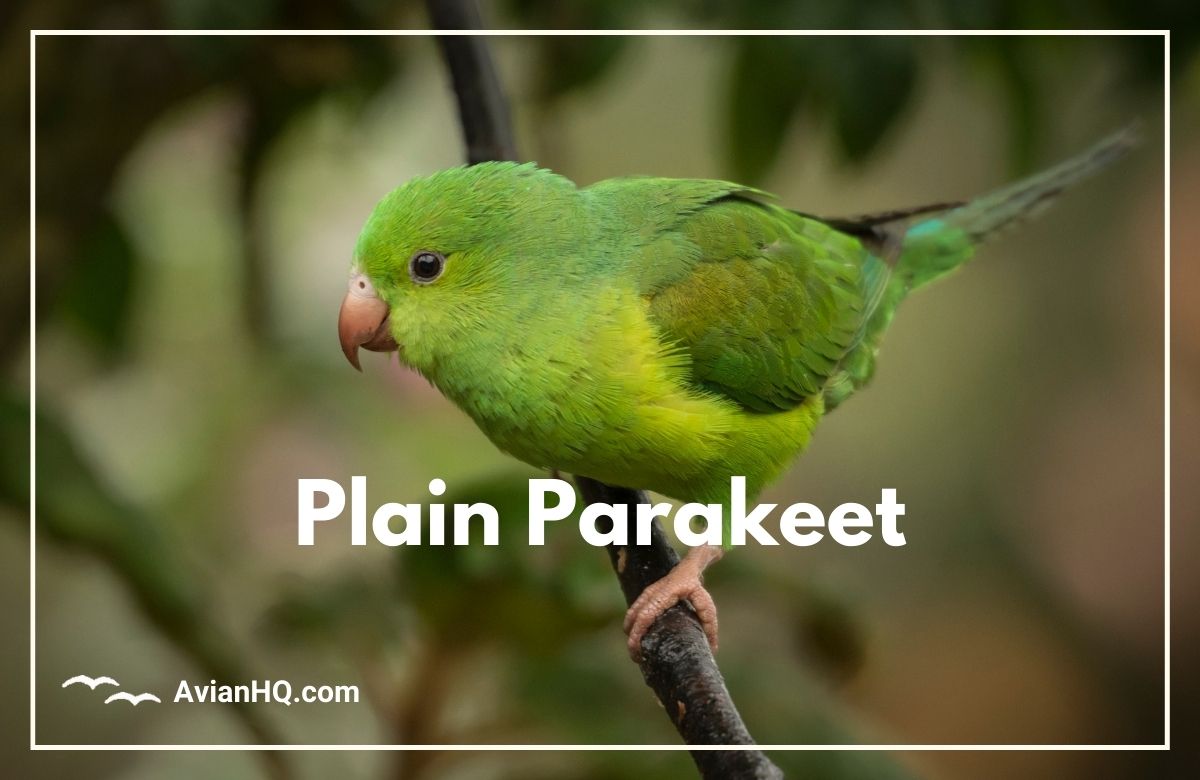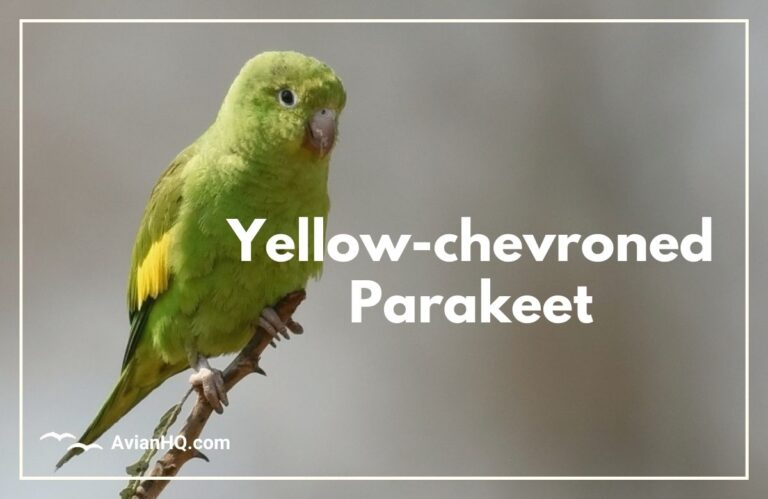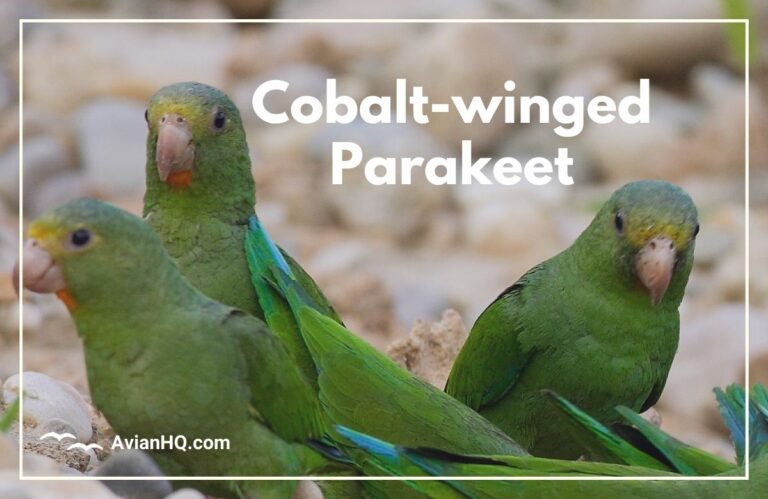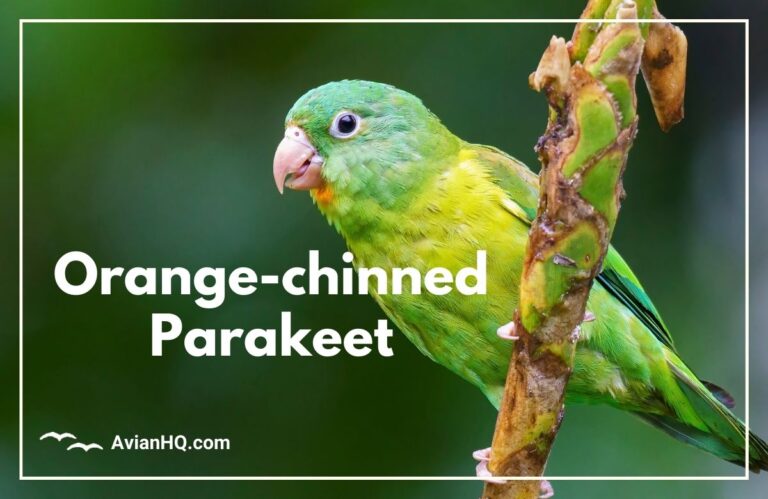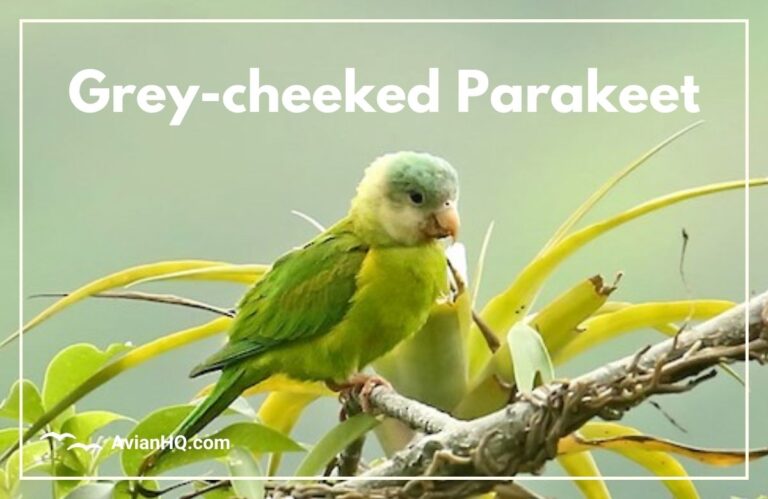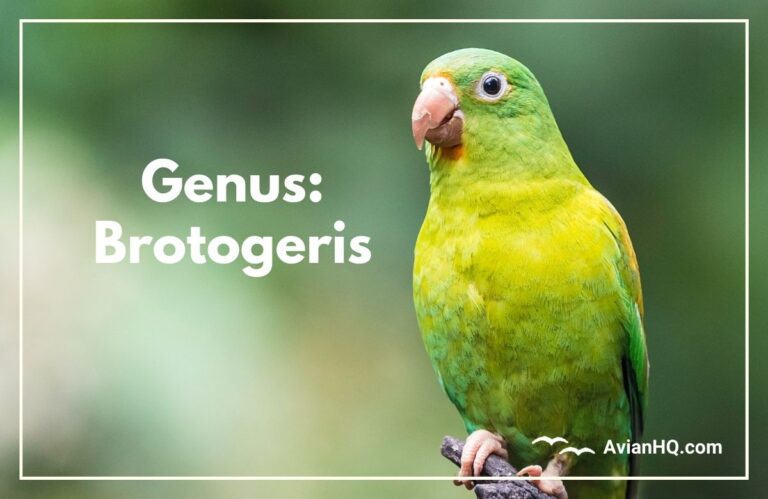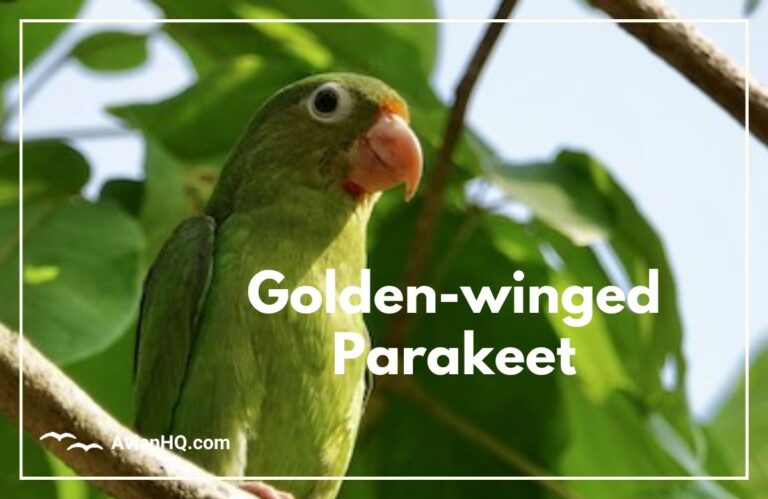Plain Parakeet (Brotogeris tirica)
The Plain Parakeet, scientifically known as Brotogeris tirica, is a charming and social bird native to the lush habitats of South America. With its vibrant plumage and sociable nature, it has become a popular choice among bird enthusiasts and pet owners alike. In this comprehensive guide, we will explore the history, taxonomy, physical appearance, habitat, diet, breeding behavior, conservation status, cultural significance, and more of the Plain Parakeet.
History and Taxonomy
The history of the Plain Parakeet can be traced back to its discovery by early explorers and naturalists. Over the years, the classification and taxonomy of this species have undergone several revisions as scientists have gained a deeper understanding of its genetic lineage. In this section, we will delve into the fascinating story of the Plain Parakeet’s discovery and explore its classification within the broader taxonomy of parrots.
Discovery and Classification
The Plain Parakeet was first discovered by explorers and naturalists who marveled at its beautiful plumage and sociable nature. Its unique traits captured the attention of scientists, leading to its detailed documentation and classification within the avian taxonomy. The process of discovering and understanding the Plain Parakeet’s characteristics has contributed to our knowledge of this species and its place in the natural world.
Taxonomy
Within the realm of taxonomy, the Plain Parakeet belongs to the Brotogeris genus. Its scientific name, Brotogeris tirica, reflects its specific classification within this genus. Taxonomists have studied the physical, genetic, and behavioral traits of the Plain Parakeet to determine its place within the broader system of classifying birds. By examining its anatomical features and genetic markers, scientists continue to refine our understanding of the Plain Parakeet’s taxonomy in relation to other parrot species.
Physical Appearance
The Plain Parakeet, also known as Brotogeris tirica, exhibits a captivating physical appearance characterized by its size, dimensions, plumage, and unique facial features. In this section, we will explore these aspects that make the Plain Parakeet visually distinct.
Size and Dimensions
The average size of the Plain Parakeet varies between 24 to 26 centimeters (9.4 to 10.2 inches) in length, making it a medium-sized parakeet species. It has a compact and well-proportioned body, with a sturdy build ideal for its agile and acrobatic nature.
Plumage and Markings
The plumage of the Plain Parakeet is predominantly vibrant green, giving it a radiant appearance amidst its natural habitat. The feathers are characterized by subtle variations in shade, including hues of yellow, turquoise, and olive. These color variations create a visually appealing contrast and contribute to its overall beauty. Additionally, the edges of the flight feathers are often adorned with a darker shade, enhancing its elegance.
The Plain Parakeet also features distinct markings that help identify the species. Along the leading edge of its wings, you may notice a narrow band of bright yellow or yellow-green coloration. This unique marking adds a touch of character to its plumage and sets it apart from other parakeet species.
Facial Features
The facial features of the Plain Parakeet further enhance its charm. It has a small, rounded head with a short and stout beak. Its eyes are large and expressive, surrounded by a narrow, pale, and often faintly bluish or whitish ring. This eye ring contributes to its distinctive facial appearance, providing a striking contrast against the vibrant green feathers.
The Plain Parakeet impresses with its medium-sized stature, vibrant plumage, distinct wing markings, and appealing facial features. These physical attributes make it a visually captivating species within the parakeet family.
Habitat and Distribution
The Plain Parakeet, also known as Brotogeris tirica, is native to the lush habitats of South America. It has a diverse range across its native region, encompassing a variety of ecosystems and elevations.
Native Range
The native range of the Plain Parakeet includes countries such as Brazil, Paraguay, and Argentina. Within these countries, it can be found in various regions, including the Amazon rainforest, Atlantic Forest, and the savannas of the Cerrado.
Preferred Habitats
The Plain Parakeet prefers habitats with abundant vegetation, such as tropical and subtropical forests, woodlands, and savannas. These habitats provide ample food sources and nesting sites for the parakeets.
Introduced Populations
There have been reports of introduced populations of Plain Parakeets in regions outside their natural habitat. For example, there are small populations in parts of Europe, where they have been introduced as escaped pets or through deliberate releases.
Elevations
The Plain Parakeet can be found at various elevations within its native range. It is known to inhabit lowland areas as well as higher elevations, including mountainous regions.
Diet and Feeding
The diet of the Plain Parakeet, scientifically known as Brotogeris tirica, is diverse and consists of various foods that are essential for its overall health and well-being. This section will provide an overview of the Plain Parakeet’s diet, including the specific foods it consumes and its feeding behaviors and foraging techniques.
The Plain Parakeet has an omnivorous diet, meaning it consumes both plant-based and animal-based foods. This allows them to obtain a wide range of nutrients necessary for their survival and growth. The diet primarily consists of fruits, seeds, flowers, and insects.
Specific Foods Consumed
The Plain Parakeet has a preference for a variety of fruits, including berries, apples, pears, and bananas. These fruits provide essential vitamins, minerals, and antioxidants that promote the bird’s overall health and immune function. Additionally, the Plain Parakeet consumes different types of seeds, such as sunflower seeds and millet seeds, which provide a good source of energy and fats.
In addition to fruits and seeds, the Plain Parakeet also includes flowers in its diet. Flowers like hibiscus and dandelions offer essential nectar and pollen, which serve as a source of carbohydrates and other vital nutrients.
Furthermore, the Plain Parakeet incorporates insects into its diet. These can include insects such as mealworms, crickets, and small beetles. Insects provide the Plain Parakeet with a high protein source, which is crucial for muscle development and maintenance.
Feeding Behaviors
The Plain Parakeet exhibits various feeding behaviors and foraging techniques to obtain its food. They are highly active foragers and often travel in flocks, searching for food together. They explore trees, foliage, and the ground in search of fruits, seeds, flowers, and insects.
One notable feeding behavior of the Plain Parakeet is its ability to manipulate food items using its feet. It holds fruits and seeds with one foot while pecking or tearing them open with its beak to reach the edible parts. This skillful technique allows the parakeet to access the nutrient-rich content of various foods.
| Food Type | Examples |
|---|---|
| Fruits | Berries, apples, pears, bananas |
| Seeds | Sunflower seeds, millet seeds |
| Flowers | Hibiscus, dandelions |
| Insects | Mealworms, crickets, small beetles |
The table above provides a summary of the specific foods consumed by the Plain Parakeet, categorized by food type.
Breeding and Reproduction
The Plain Parakeet follows a specific breeding and reproduction process. It exhibits fascinating behaviors and mechanisms to ensure the survival of its species. From the selection of nest sites to the successful fledging of young parakeets, this section will explore the various aspects of the Plain Parakeet’s breeding and reproduction cycle.
Nest Sites
The choice of nest site is crucial for the Plain Parakeet’s breeding success. These social birds prefer to nest in tree cavities or old woodpecker holes located in dense vegetation. The natural surroundings provide security and protection from predators, ensuring a safe environment for incubating eggs and raising offspring.
Clutch Size
The female Plain Parakeet typically lays a clutch of three to five eggs. The number of eggs may vary slightly depending on factors such as the availability of resources and the health of the breeding pair. The clutch size is an important determinant of reproductive success and the future population of Plain Parakeets.
Incubation and Fledging
After the female lays the eggs, both parents take turns incubating them. The incubation period lasts approximately 21 to 25 days, during which the parents diligently keep the eggs warm and protected. Once the eggs hatch, the parakeet chicks rely on their parents for nourishment and care. They stay in the nest for about five to six weeks until they are ready to fledge and explore the world on their own.
Behavior and Ecology
The behavior and ecology of the Plain Parakeet, also known as Brotogeris tirica, exhibit intriguing characteristics that contribute to their survival and interactions within their habitat. In this section, we will delve into their social structure, roosting habits, foraging behaviors, and interactions with other species.
Social Structure
The Plain Parakeet is a highly social bird that forms flocks consisting of several individuals. Within these flocks, a hierarchical social structure exists, with dominant birds exerting influence over others. This social hierarchy helps maintain order and cooperation during activities such as foraging and roosting.
Roosting Habits
When it comes to roosting, Plain Parakeets tend to gather in communal roosting sites, such as tree cavities or dense vegetation, where they rest and spend the night together. These roosting sites provide safety in numbers and protection from potential predators.
Foraging Behaviors
Plain Parakeets showcase a range of foraging behaviors in their search for food. They are primarily frugivorous, consuming various fruits, berries, and seeds found in their natural habitat. These parakeets also engage in opportunistic feeding, taking advantage of seasonally available resources. Their foraging behavior contributes to the dispersal of seeds, aiding in the maintenance of plant diversity in their ecosystem.
Interactions with Other Species
Within their habitat, Plain Parakeets interact with other bird species, forming mixed-species foraging flocks. These flocks consist of different bird species that come together to collectively gather food and enhance their ability to detect predators. This interaction creates a mutually beneficial relationship, where the Plain Parakeets benefit from increased vigilance and access to new feeding sites, while other species benefit from the expertise and safeguarding provided by the Plain Parakeets.
| Traits | Details |
|---|---|
| Social Structure | Dominant birds establish a hierarchical social structure within flocks. |
| Roosting Habits | Plain Parakeets gather in communal roosting sites for safety and protection. |
| Foraging Behaviors | They primarily feed on fruits, seeds, and berries, contributing to seed dispersal. |
| Interactions with Other Species | They form mixed-species foraging flocks, benefiting from increased vigilance and collaborating with other bird species. |
Conservation Status
The conservation status of the Plain Parakeet, scientifically known as Brotogeris tirica, is a topic of concern due to various factors impacting its population. Understanding the population estimates and trends, as well as identifying the major threats to its survival, is crucial for effective conservation efforts.
Population Estimates and Trends
Accurate population estimates are essential for assessing the status of the Plain Parakeet and determining appropriate conservation measures. However, due to the bird’s elusive nature and the vastness of its habitat, obtaining precise population figures can be challenging.
Studies have relied on various methods to estimate the population of Plain Parakeets, including visual surveys, acoustic monitoring, and statistical modeling. While these methods provide valuable insights, they often result in a range of population estimates rather than definitive numbers.
Population trends indicate a decline in the overall numbers of the Plain Parakeet, primarily attributed to habitat loss, fragmentation, and human interference. The destruction of its natural habitat resulting from deforestation, urbanization, and agricultural activities has had a significant impact on its population dynamics.
Major Threats
The Plain Parakeet faces several significant threats that contribute to its vulnerable conservation status. These threats include:
| Threat | Impact |
|---|---|
| Habitat Loss | Loss of nesting and foraging sites |
| Illegal Capture and Trade | Reduction in wild populations |
| Predation | Reduced reproductive success and survival |
| Pesticide Use | Contamination and health risks |
| Climate Change | Disruption of breeding and foraging cycles |
It is crucial to address these major threats and implement conservation strategies to safeguard the Plain Parakeet and its habitat. Efforts must focus on habitat restoration and protection, community engagement, sustainable land-use practices, and stringent regulations against illegal trade.
Conservation
Efforts to conserve the Plain Parakeet and its habitat are crucial for ensuring the long-term survival of this species. Several conservation programs and initiatives have been implemented to protect and restore the populations of Brotogeris tirica.
Conservation organizations and government agencies are actively involved in monitoring and studying the Plain Parakeet, as well as implementing various strategies to address the threats and challenges faced by this species in the wild. These initiatives aim to raise awareness, promote sustainable practices, and develop effective conservation measures.
Some key conservation efforts include:
| Conservation Efforts | Description |
|---|---|
| Protecting habitats | Conservation organizations work to preserve the natural habitats of the Plain Parakeet through land conservation and management. |
| Establishing protected areas | National parks and reserves are established to safeguard critical habitats and offer protection to the Plain Parakeet. |
| Habitat restoration | Projects are undertaken to restore and create suitable breeding and foraging grounds for the Plain Parakeet. |
| Community engagement | Local communities are involved in conservation efforts through education, awareness campaigns, and capacity-building programs. |
| Research and monitoring | Scientific studies and monitoring programs gather essential data on the Plain Parakeet’s population, behavior, and ecology. |
| International collaboration | Collaboration with international organizations and stakeholders helps develop conservation strategies that span across the species’ range. |
The collaboration between conservationists, researchers, local communities, and governments is instrumental in protecting the Plain Parakeet and its habitat for future generations. Through these collective efforts, we can make a significant impact in preserving the natural heritage of the Brotogeris tirica and ensure its continued existence in the wild.
Cultural Significance
The Plain Parakeet, also known as Brotogeris tirica, holds a significant place in various indigenous cultures and is revered for its symbolic meanings. This charming bird has influenced art, folklore, and traditional practices, reflecting its deep-rooted cultural importance.
In indigenous cultures, the Plain Parakeet is often associated with the natural world, embodying qualities such as freedom, harmony, and connection to the spirit realm. Its vibrant plumage and social nature have inspired artistic representations, with the bird depicted in paintings, sculptures, and textiles.
“The Plain Parakeet, with its vibrant colors and playful demeanor, symbolizes joy and happiness in our folklore. It is believed to bring good fortune and prosperity to those who encounter it,” says Juan Perez, a local storyteller.
Additionally, the bird holds a special place in traditional practices and rituals. Its feathers are used in ceremonies as symbols of protection, wisdom, and spiritual guidance. The Plain Parakeet’s presence is believed to bring blessings and positive energy to individuals and communities.
Overall, the Plain Parakeet’s cultural significance highlights the strong connection between nature and human culture. Its symbolism and representation in various art forms serve as a reminder of the profound impact of the natural world on our lives.
| Cultural Significance of Plain Parakeet |
|---|
| Symbol of joy and happiness |
| Bringer of good fortune and prosperity |
| Representation of freedom and harmony |
| Used in ceremonies for protection and spiritual guidance |
Conclusion
In conclusion, the Plain Parakeet (Brotogeris tirica) is a captivating and social bird native to South America. Throughout this comprehensive guide, we have explored the history, taxonomy, physical appearance, habitat, diet, breeding behavior, conservation status, and cultural significance of the Plain Parakeet.
The Plain Parakeet’s vibrant plumage and charming demeanor have made it a popular choice among bird enthusiasts and pet owners. Its small size and unique facial features distinguish it from other parakeet species.
With a diverse habitat range across South America, the Plain Parakeet can be found in various ecosystems and elevations. Its diet consists of fruits, seeds, flowers, and insects, and its social behavior includes roosting habits and foraging techniques.
Although the Plain Parakeet faces conservation challenges due to population decline and habitat loss, there are ongoing efforts to protect and preserve this species. Furthermore, it holds cultural significance in indigenous communities, symbolizing various meanings and inspiring art and folklore.
In summary, the Plain Parakeet is a fascinating bird that showcases the beauty and diversity of South America’s natural world. Understanding and appreciating this species is crucial for its conservation and for the continued enjoyment and appreciation of its unique attributes.

